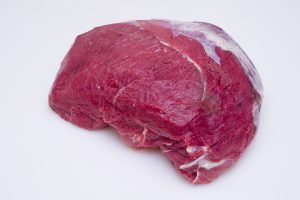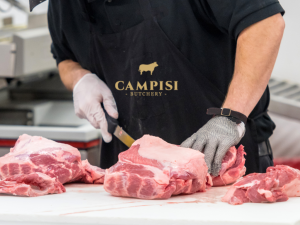The art of cooking meat goes beyond just heating and serving. Proper cooking techniques are essential for several reasons. Firstly, they bring out the best flavors and textures in the meat, enhancing the overall dining experience. Secondly, correct cooking methods ensure that the meat is cooked safely, reaching temperatures that make it safe to eat. Lastly, understanding these techniques allows for greater culinary creativity and the ability to consistently produce high-quality dishes.
The Relationship Between Cooking Methods and Meat Quality

The quality of the final dish is directly influenced by the chosen cooking method. Different techniques can accentuate certain qualities of the meat, such as tenderness, juiciness, and flavor intensity. The cooking method also plays a critical role in preserving the meat’s nutrients and texture. Therefore, matching the right cooking technique with the specific type of meat is crucial for achieving the desired outcome.
Assessing Meat Types and Appropriate Cooking Methods

Matching Cooking Techniques with Different Types of Meat (Beef, Pork, Poultry, etc.):
- Beef: Best suited for a variety of methods like grilling, roasting, and braising. The method chosen often depends on the cut; for instance, steaks are ideal for grilling, while tougher cuts like brisket are better for slow cooking.
- Pork: Versatile in cooking, pork can be roasted, grilled, or slow-cooked. Cuts like pork belly benefit from slow roasting, while loin or chops are excellent when grilled.
- Poultry: Chicken and other poultry can be roasted, grilled, or pan-fried. Delicate cuts like chicken breasts require careful monitoring to prevent drying out, while darker cuts like thighs are more forgiving.
How Meat Cuts Influence Cooking Choices
The specific cut of meat plays a pivotal role in determining the appropriate cooking method. Tender cuts from less-used muscles (like sirloin or ribeye steaks) are best for quick, high-heat methods like grilling or pan-frying. Tougher cuts with more connective tissue (like chuck or brisket) benefit from slow, low-heat cooking methods like braising or stewing, which help break down the tissue into gelatin, resulting in tender, flavorful meat.
Exploring Various Cooking Techniques

Grilling and Barbecuing: Bringing Out the Best in Meats
Grilling and barbecuing are popular methods for cooking meats, especially during warmer months. These methods use direct heat to cook the meat quickly, creating a charred, smoky flavor that’s highly sought after. It’s ideal for steaks, burgers, chicken breasts, and pork chops. The key to successful grilling is managing the heat to ensure the meat is cooked through without burning the exterior.
Roasting: Techniques for Juicy and Tender Results
Roasting involves cooking meat in an oven at a consistent temperature. It’s ideal for larger, tender cuts like whole chickens, turkeys, or beef roasts. The slow, even heat allows the meat to cook uniformly, resulting in a juicy, tender texture. Basting and proper seasoning are important in roasting to enhance flavor and prevent dryness.
Sautéing and Pan-Frying: Quick Methods for Flavorful Meats
Sautéing and pan-frying are quick, high-heat cooking methods suitable for thinner, more tender cuts of meat. These methods involve cooking meat in a small amount of fat over relatively high heat. It’s a great way to achieve a flavorful, browned crust on meats like chicken breasts, pork medallions, or steak fillets.
Slow Cooking and Braising: Maximizing Tenderness in Tougher Cuts
Slow cooking and braising involve cooking meat at low temperatures for extended periods. These methods are perfect for tougher cuts of meat, as the long cooking process breaks down connective tissues, resulting in incredibly tender and flavorful dishes. Braising typically involves first searing the meat and then cooking it slowly in a small amount of liquid, while slow cooking often uses more liquid and can be done in a slow cooker or low oven.
Temperature and Timing: Key Factors in Meat Cooking

Understanding the Role of Internal Temperature in Meat Doneness
The internal temperature of meat is the most reliable indicator of its doneness. Different types of meat and cuts require specific internal temperatures to be considered safe to eat and to achieve the desired texture and juiciness. For instance, a medium-rare steak reaches its best texture and flavor at an internal temperature of around 130°F to 135°F (54°C to 57°C). Using a meat thermometer is essential to accurately gauge these temperatures, ensuring perfectly cooked meat every time.
The Importance of Cooking Time for Different Meat Cuts
Cooking time varies significantly depending on the type and cut of meat. Thinner, tender cuts like chicken breasts or steak fillets cook quickly, often needing just a few minutes per side. In contrast, tougher cuts like pork shoulder or beef brisket require several hours of cooking to break down the connective tissues. Understanding the appropriate cooking time for each cut is crucial for achieving the best results.
Marinating and Seasoning: Enhancing Flavors

How Marinating Can Improve Meat Quality
Marinating meat not only infuses it with flavor but can also help tenderize tougher cuts. Acidic components in marinades, such as vinegar or citrus juice, can break down proteins, making the meat more tender. However, it’s important to marinate for the right amount of time – too long, and the meat can become mushy; too short, and the flavors won’t penetrate.
Effective Seasoning Techniques for Various Meats
Seasoning meat is an art that enhances its natural flavors. The key is to use the right combination of herbs, spices, and salts. For example, robust herbs like rosemary and thyme pair well with red meats, while milder herbs like parsley and dill complement poultry and fish. Seasoning can be done just before cooking or as part of a marinade for deeper flavor infusion.
Resting Meat Post-Cooking: A Crucial Step

Why Resting Meat is Important
Resting meat after cooking is a critical step that is often overlooked. When meat is cooked, the heat causes the juices to move towards the surface. Resting allows these juices to redistribute throughout the meat, ensuring that it remains juicy and flavorful when cut. Skipping this step can result in dry, less flavorful meat.
The Impact of Resting on Meat Texture and Juiciness
The length of the resting period depends on the size of the meat cut. Larger cuts like roasts may need to rest for 20 minutes or more, while smaller cuts like steaks and chicken breasts benefit from a shorter rest of 5 to 10 minutes. A proper rest period improves the meat’s texture, making it tender and retaining its juiciness, which elevates the overall eating experience.
Common Mistakes in Meat Cooking and How to Avoid Them

Overcooking and Undercooking: Finding the Balance
One of the most common mistakes in cooking meat is not hitting the sweet spot between undercooking and overcooking. Undercooked meat can be unsafe and unappetizing, while overcooked meat tends to be dry and tough. The key to avoiding this is using a meat thermometer to check the internal temperature and understanding the cooking times appropriate for different cuts and sizes of meat.
Avoiding Improper Temperature and Timing Issues
Another common issue is not allowing the meat to reach room temperature before cooking or not preheating the cooking surface or oven. This can lead to uneven cooking. Allowing the meat to sit out of the fridge for a bit before cooking and ensuring your grill, pan, or oven is at the right temperature can make a significant difference.
Tips for Preventing Flavor Loss and Toughness
To prevent flavor loss and toughness in meat:
- Avoid over-marinating, especially with acidic ingredients, as this can make the meat mushy.
- Don’t cut into the meat immediately after cooking; let it rest to retain its juices.
- Use gentle cooking methods for tougher cuts and avoid high heat, which can toughen proteins.
Advanced Cooking Techniques for Meat Enthusiasts

Sous Vide: Precision Cooking for Optimal Results
Sous vide is a technique that involves vacuum-sealing meat and cooking it in a water bath at a precisely controlled temperature. This method allows for exceptional control over the doneness of the meat and ensures even cooking. It’s excellent for achieving perfect medium-rare steaks or tender, juicy poultry.
Smoking Meats: Techniques for Depth of Flavor
Smoking is a method that not only cooks the meat but also infuses it with a smoky flavor. It’s particularly popular for cuts like brisket or ribs. Key factors in smoking include choosing the right wood, maintaining consistent temperatures, and patience, as smoking can take several hours to impart the full flavor.
Conclusion
Mastering meat cooking is a journey that involves experimentation and continuous learning. Each type of meat and cut offers a unique opportunity to explore different flavors and techniques. Whether you’re a beginner or an enthusiast, there’s always something new to discover in the art of cooking meat. Embrace the process, and don’t be afraid to try new methods like sous vide or smoking to expand your culinary repertoire.















